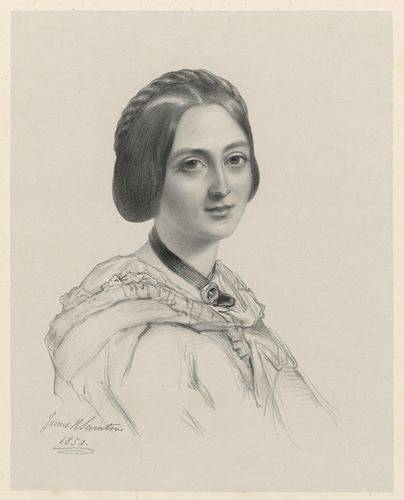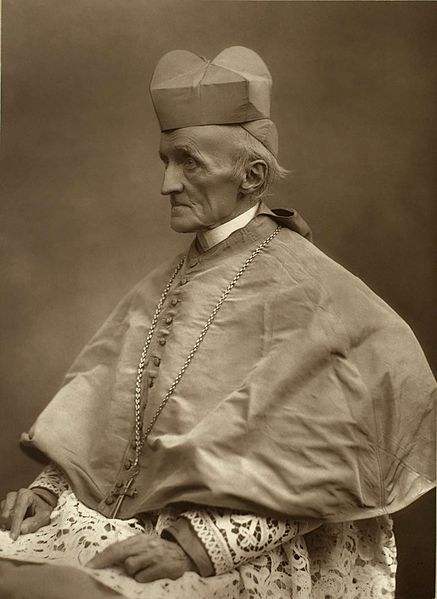Mary Elizabeth Ashe à Court-Repington was born in Richmond, Surrey, on July 21, 1822. She was the only daughter of Lieutenant-General Charles Ashe à Court-Repington, member of Parliament, and the niece of William à Court, 1st Baron Heytesbury, British Ambassador to the Russian Imperial Court at St. Petersburg.
In August 1846, at the age of 24, she married The Honorable Sidney Herbert, second son of the 11th Earl of Pembroke.
During the Crimean War (1853-1856), her husband was made Secretary of War, and in 1862, 1st Baron Herbert of Lea and a peer of the realm, but died within months, leaving Lady Herbert a widow at 39 years of age, with four young sons and three tender daughters.
Her eldest son George inherited the barony, and in the following year, he succeeded his uncle as the 13th Earl of Pembroke and 10th Earl of Montgomery.
For many years, Lady Herbert had felt drawn to the Catholic Church, but hesitated greatly in converting, for fear that her young children would be taken from her. Prior to his own conversion to the Catholic faith in 1851, the future Cardinal Manning had been an intimate friend and even spiritual director to her and her husband. But not wanting to create political difficulties for his noble friends, the learned convert had discontinued all contact.
One day, Lady Herbert could resist no longer and dropped in for a visit. Kneeling before him, she asked for his blessing, which he gave in silence.
More and more attracted to the faith, she opened her heart and disclosed her fears to the future Cardinal. He asked her if she had heard of St. Jane Francis de Chantal. When this saint told her children that she was resolved to enter the religious life, a son lied down across the threshold of the door to prevent her leaving. But undaunted, the saint had stepped over him. The example helped Lady Herbert find the moral strength to convert. She abjured Anglicanism and entered the Catholic Church in 1866, five years after her husband’s death.*
She became an “ardent ultramontane,” meaning a strong defender of the Papacy and its rights, and her great spiritual friend, now Archbishop of Westminster, turned out to be the great English champion for the proclaiming of the dogma of papal infallibility in 1870, during the First Vatican Council.
Her children were taken from her and made wards in Chancery, being raised in the Church of England. Only her eldest daughter, Mary, followed her into the Catholic faith.
Lady Herbert continued to have much influence in Britain’s high society. She wrote and translated extensively, bringing into English from its original French, Father Augustine Berthe’s acclaimed Garcia Moreno. After her conversion to the Catholicism, she traveled to Rome on pilgrimage on an almost annual basis.
Baroness Herbert of Lea died at Herbert House in London, on October 30, 1911.
* Cf. How I entered the fold by Lady Herbert of Lea
Short Stories on Honor, Chivalry, and the World of Nobility—no. 400










